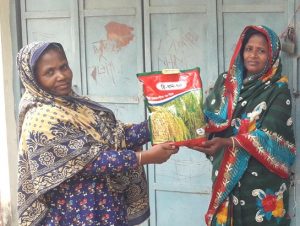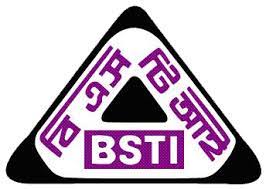Danielle Nierenberg
“Our movement must ground in the struggles that are real. That are faced by the people who are bearing the brunt of the negative consequences of our destructive food system every day,” Navina Khanna, Director of the HEAL Food Alliance told Food Tank. Unravelling that destructive food system comes in many forms. For Black and Indigenous farmers, food justice may mean land reparations and improved legal protection to land rights. For the millions who produce and harvest our food, ensuring the rights of farmworkers and advocating for agroecological practice can lead to justice in employment. For consumers, adequate access to healthy and affordable food, and the awareness to select and prepare it, can signal a more just food system.
Often women lack equitable access to land and resources while more than 820 million people are hungry, according to the Food and Agriculture Organization. And 98 percent of American farmland is white-owned while Black and Indigenous communities have been displaced from land they stewarded for generations.
But there are individuals and organizations across the globe who are taking on creating more equitable and just food systems. And as eaters, we can support their efforts every day.
In celebration of the United Nations’ World Day of Social Justice on February 20th, Food Tank is highlighting seven ways you can fight for justice in food and agriculture: fighting for land access, saving and sharing seeds, adopting agroecological farming techniques, expanding food access, defending workers’ rights, ensuring equal opportunity, and championing food education.
In honour of World Justice Day on February 20, Food Tank is celebrating seven ways to fight for a more equitable and sustainable food system.
Today, more than 820 million people are hungry, according to the U.N. Food and Agriculture Organization, and food insecurity remains on the rise. Meanwhile, the climate crisis threatens food supply, biodiversity, and human health.
The food system also faces broad global injustices. Many women lack equitable resources, opportunities, and access to land. Ninety-eight percent of American farmland is white-owned, and thousands of Indigenous communities have been displaced in all corners of the world.
Furthermore, governments and corporations often rob workers of sovereignty and adequate pay. “We’ve been fighting this issue for almost a decade,” Saru Jayaraman, President of One Fair Wage tells Food Tank, “this fact that the federal minimum wage for tipped workers is still a ridiculous US$2.13 an hour.”
To address these issues and build a more equitable food system, many experts say going back to the way things were before the pandemic is not an option. “We should be talking about a complete and total dismantling of our corporate food system and building infrastructure locally from the ground up,” Devita Davison, Director of FoodLab Detroit tells Food Tank.
Fortunately, food justice comes in many forms—protecting human rights and restoring the environment, as well as creating jobs and expanding access to healthy, culturally appropriate food. Food Tank is highlighting seven examples below.
1. Fighting for land access
“Malcolm X says that land is the basis of all revolution, freedom, justice, and equality,” Leah Penniman—farmer, advocate, and author of Farming While Black—tells Food Tank. “So when we talk about reparations, we really have to centre land.”
With land comes access to food, shelter, and wealth. Fighting for land justice includes returning stolen and misappropriated land to Black, Indigenous, and people of colour (BIPOC). Fighting for land access might also look like advocating for agrarian reform—or the redistribution of land—and defending legal land rights.
Groups striving for equitable land access include Confederación Nacionalidades Indígenas del Ecuador (Ecuador), Black Farmer Fund (United States), Forest Peoples Programme (International), Movimento dos Trabalhadores Rurais Sem Terra (Brazil), Northeast Farmers of Color Network (United States), and Stand for Her Land (International).
2. Saving and sharing seeds
Activist Winona LaDuke argues that the industrialized food system sacrificed nutritional value for efficiency, selecting crops that could produce high yields and resist diseases. In a TEDx Talk, she says that these traditional varieties are now “the endangered ones, but these are the ones that in our theory are the seeds not just for now, but are the seeds and the hope for the future.”
As crop diversity continues to decline, seed-saving serves as a way to preserve biodiversity and safeguard the cultural heritage surrounding Indigenous species. Diverse plant ecosystems can also help sequester carbon in soils, prevent erosion, protect waterways, and provide fresh food for local communities.
“Seeds are the foundation of our food system,” Sherry Manning, Founder and Executive Director of Global Seed Savers, tells Food Tank. “We cannot separate culture and identity from the art, act, and love of growing food,” she says. “Seed Saving is an essential piece of this knowledge, and in order to build a resilient food system in these ever-changing times we have to return to this Indigenous wisdom.”
Seed banks and libraries like Crop Trust (Germany), the Native American Food Sovereignty Alliance (United States), and more collect and preserve rare seeds, including many species that are native to Indigenous communities. Networks like Navdanya (India), Seed Savers Exchange (United States), and The World Vegetable Center (Taiwan) also provide people with the seeds and knowledge they need to grow their own food.
3. Adopting agroecological farming techniques
“Agroecology is becoming the most robust approach to dealing with the problems of hunger, food insecurity, [and] environmental degradation around the world,” says Dr. Miguel Altieri, Professor of Agroecology at the University of California, Berkeley. Various agroecological techniques, he says, are leading to “biodiversity conservation, climate change adaptation, and more importantly, producing food at the local level that is available to not only people that can afford it but also the people that are also food insecure.”
Agroecology is the science of keeping plants, animals, humans, and the environment in balance. Agroecological farming aims to sustain food production and address food insecurity while also restoring ecosystems. Examples of agroecology include avoiding monocultures, adopting no-till practices, composting, and eliminating the use of artificial pesticides, fertilizers, and herbicides.
It is also important to note that agroecological farming is not new—many Indigenous communities have relied on regenerative practices for decades. Organizations like
Latin American Agroecology Movement (International), The Traditional Native American Farmers Association (United States), the First Nations Development Institute (United States), and Ngā Pae o te Māramatanga (New Zealand) are dedicated to preserving and sharing these traditions.
4. Expanding food access
According to the World Food Programme, there at least 135 million people in the world today who are facing acute levels of hunger, and this number continues to grow, driven by climate change, armed conflict, and the pandemic.
“We don’t invest in the policies that are necessary to support increased access to increased access to financial benefits that will support consumers’ ability, wherever you live, to access nutritious foods,” says Ertharin Cousin, Visiting Scholar at the Center on Food Security and the Environment at Stanford University.
Everyone has a right to fresh, nutritious, affordable, and culturally appropriate food. Fighting for food access includes donating to local food pantries and anti-hunger organizations, as well as investing in grocery stores, farmers markets, and gardens in regions with limited access to healthy food. It also means advocating for policies that offer food purchasing assistance and free school lunches.
Groups like the Food Recovery Network (United States), Sesc Mesa Brasil (Brazil), The Felix Project (England), Tkiyet Um Ali (Jordan), and more divert food waste to provide meals for people in need. Other anti-hunger organizations include Feeding America (United States), Local Futures (International), World Food Programme (International), and Wholesome Wave (United States).
5. Defending workers’ rights
“[Farm workers] harvest the food we eat and sometimes they don’t even have food on their table,” Teresa Romero, President of the United Farm Workers labour union, tells Food Tank.
The food chain spans from farmers and factory workers to packers, drivers, cooks, wait staff, and many, many more—each of whom has a right to living wages and safe working conditions, like sick leave and protection from COVID-19.
Advocating for labour justice might look like demanding transparency from food companies and purchasing ethically-sourced and Fair Trade Certified™ foods. It also means championing legislation that protects the health, safety, and dignity of all workers—including undocumented labourers, who make up nearly half of all U.S. farm workers.
Food worker advocacy falls under the purview of groups like AFL-CIO (United States), Alianza Nacional de Campesinas (United States), La Vía Campesina (International), Restaurant Opportunities Centers United (United States), The Food Chain Workers Alliance (United States), Unite Here! (International), and Walk Free (International).
6. Ensuring equal opportunity
Fighting for equal employment means ensuring all workers have an opportunity to succeed, regardless of race, religion, ethnicity, gender, or socioeconomic status. That involves enacting anti-discrimination policies, fostering inclusive environments, and recognizing that—in many communities—agriculture, food, and food service industries are often segregated by race and gender. Groups like CARE (International), The Lee Initiative (United States), and Women in the Food Industry (United States) are working to address these inequities.
Navina Khanna, Executive Director of the HEAL Food Alliance, calls for a community-centered approach. “There is so much experience, wisdom, genius, solutions, in the communities that we’re talking about,” she tells Food Tank. Whether it’s Navajo Nation, or Flint, or among restaurant workers—folks know what they need.”
Equal opportunity also means ensuring that family farms and small businesses have a fair chance against corporate conglomerates. This might look like supporting unions, expanding access to new technology, or advocating for policies that bolster small businesses and check corporate influence in the food system—which is the goal of organizations like Farm Aid and Food and Water Watch in the United States.
7. Championing food education
“We really want [youth] to see food and cooking as something that can really permeate their everyday lives and be something that is super fun and accessible,” youth health activist and HAPPY Organization CEO Haile Thomas tells Food Tank.
Community classes play an important role in encouraging children and adults to make informed, budget-friendly choices. Programs like those offered by the Food Literacy Center in Sacramento, California, can teach students about the impact their diets have on their health, the environment, and the economy.
Kid-friendly books and groups like Action for Healthy Kids (United States), Common Threads (International), Cooking Matters (United States), Courageous Kitchen (Thailand), and Taste Education (England) offer tips, recipes, and resources for children and caregivers.
(Danielle Nirenberg is the President of Food Tank and can be reached at danielle@foodtank.com)




